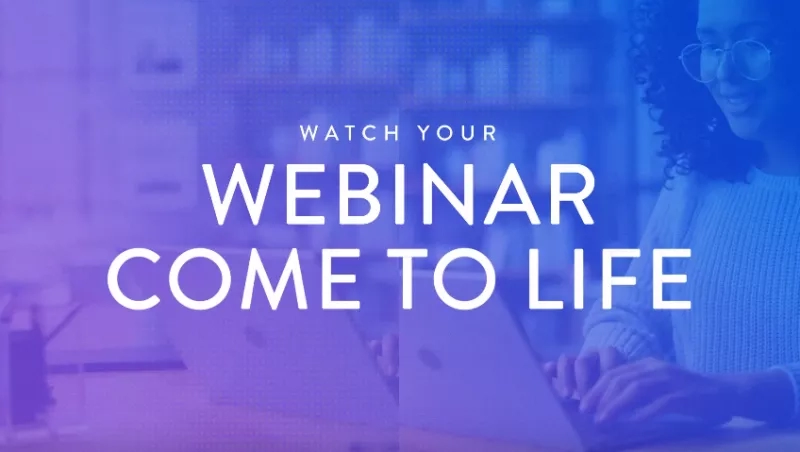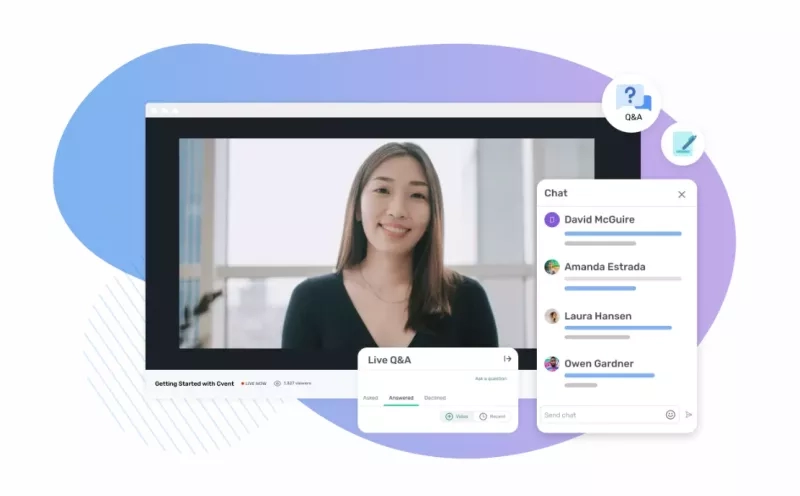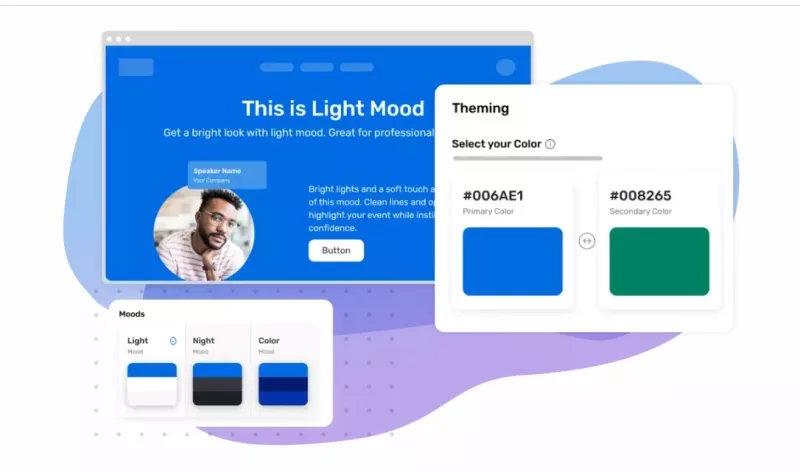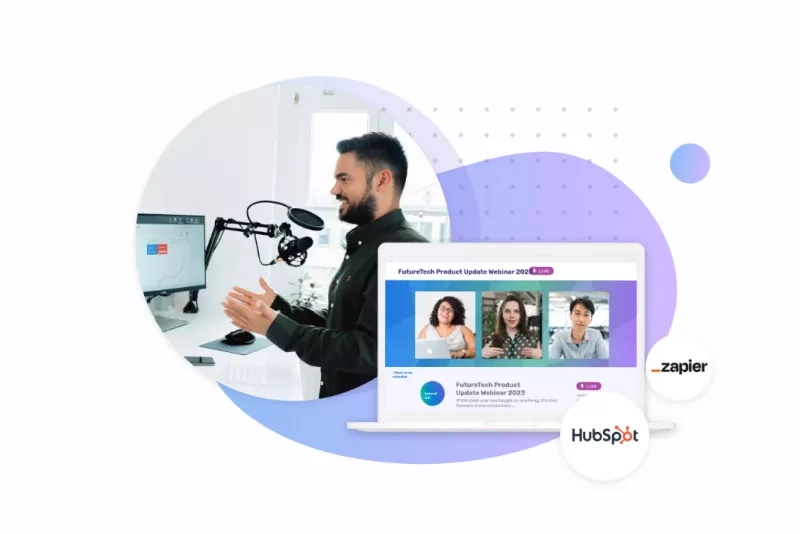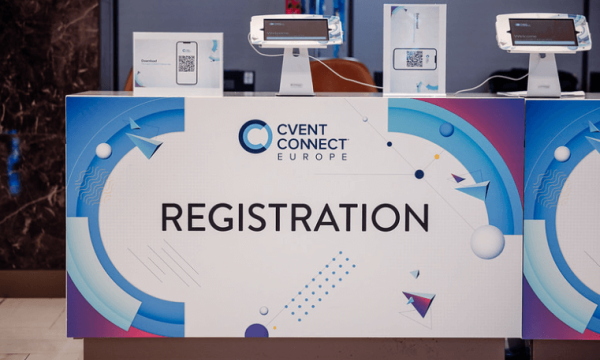There's no denying the staying power of the webinar in a marketer's playbook. Webinars are a proven marketing tool to generate leads and educate audiences. In a 2020 survey of marketers from over 2,000 global businesses, 99% identified webinars as crucial to their marketing plan. Additionally, 89% said webinars generated more qualified leads than other channels, and 78% reported a reduced cost per lead with webinars.
As someone who has promoted webinars as part of a global marketing organization for 11+ years, the facts are clear: when done right, live webinars can achieve this and a whole lot more. On the flip side, a poor webinar experience can lead to disengaged attendees, and missed opportunities, not to mention collateral brand damage.
This blog post provides actionable tips to help maximize the webinar experience for your audience. So read on.
15 Tips to Improve Webinar Experience
Before the Webinar
1. Optimize Your Webinar Landing Page
Designing the landing page is one of the most important parts of planning and executing webinars. That’s because the landing page serves as the first touchpoint for your potential attendees.
Create a captivating landing page that intrigues visitors and provides them with all the essential information. You can do that by:
- Having a crisp title and minimalist design with a clear call-to-action button.
- Highlighting key benefits attendees will receive, possibly bulleted.
- Explicitly stating the date and time.
- Incorporating quality images and videos relevant to the content.
- Streamlining registration to 2-3 simple steps.
- Avoiding external links that can side-track visitors.
- Featuring testimonials from past attendees or experts to build credibility.
2. Choose a Quality Webinar Platform
The webinar technology you choose can significantly influence its success. A robust, feature-rich platform like Cvent can provide attendees with a seamless, highly-collaborative experience and bolster your presentation capabilities.
Look for platforms offering interactive features like:
- High-Quality Video and Audio: Clear, lag-free video and audio are fundamental to ensure participants can see and hear the content without disruptions. The best webinar software offer broadcast-quality video, which really levels-up engagement and interactivity.
- Screen Sharing: Allows presenters to display slides, demonstrations, or other relevant visuals to attendees.
- Interactive Features: Tools like live polls, Q&A sessions, and chat functionalities to engage attendees in real time.
- Recording Capabilities: As a host, you should be able to record the webinar for later viewing or distribution.
- Analytics and Reporting: Insights into registration numbers, attendee engagement, and other performance metrics to gauge the webinar's effectiveness.
- Multi-presenter Support: Enables multiple presenters to co-host or switch control seamlessly.
- Mobile Access: Ensures attendees can join and participate in webinars from smartphones and tablets.
- Custom Branding: Allows hosts to customize the platform's appearance to align with their brand.
- Integration Capabilities: Easy integration with other tools, such as CRM systems, email marketing platforms, or payment gateways.
- Security Features: Tools like password protection, encryption, and controlled access to ensure the webinar's content and participants' information are secure.
3. Proactively Promote Your Webinar
Promotionis an indispensable aspect of orchestrating a successful webinar. A meticulously planned webinar might fall flat without the right webinar marketing strategies. Harnessing various digital platforms, be it social media channels, blog posts, or email campaigns, can exponentially increase your reach.
Tailored promotional messages or teasers can stir curiosity among your target audience. By integrating unique features or giveaways in your promotions, you can not only differentiate your webinar from others but also foster a sense of anticipation and excitement.
4. Design Captivating Slides
Visual appeal plays a pivotal role in retaining audience attention. Crafting a visually compelling slide deck can significantly enhance your presentation. Use images extensively to reinforce the topic. Minimal text is fine if purposeful—avoid long paragraphs. Copy should enhance, not distract. Stick to one cohesive color palette and avoid clutter.
5. Craft Your Content with Precision
Content is king, especially in webinars. With attendees primarily joining to learn and gather insights, placing the utmost importance on your content's quality and relevance is crucial. High editorial standards ensure credibility and trustworthiness. Your topic should be of interest and establish you as a knowledgeable authority in the field. This authenticity will resonate with your audience and demonstrate that you're informed and aligned with current industry trends.
While general topics can offer a broad overview, they can often dilute the focus and leave attendees wanting more. For instance, addressing "content marketing" might be overwhelming and unspecific. However, zeroing in on a niche within, like "visual content strategies," can provide depth, specificity, and greater value.
To uncover the ideal topic for your webinar, consider the following strategies:
- FAQs: Your platform's frequently asked questions often indicate audience interests.
- Google Analytics: Review top-performing pages on your site for popular themes.
- Team Feedback: Sales and social media teams can provide insights from daily client interactions.
- Audience Polling: Engage directly with potential attendees to gauge their interests.
- Competitor Analysis: Observe successful topics in your industry, offering your unique spin.
6. Dedicate a Unique Hashtag
In the age of social media, a unique hashtag can be a potent tool for creating buzz around your webinar. A well-chosen hashtag can help consolidate conversations about your event.
Build community pre-webinar by encouraging early use of the hashtag.
During the webinar, monitor the hashtag to interact with attendees, address technical issues, and gather Q&A questions. Afterward, continue conversations by following up on unanswered questions and sharing additional resources.
7. Collaborate with Industry Experts
A monotonous speaker can quickly deflate the energy of a webinar. Ensure your host is knowledgeable about the topic and brings enthusiasm and charisma to the table. If multiple speakers are involved, encourage a lively dialogue over individual monologues to maintain audience engagement.
Furthermore, consider inviting industry experts or thought leaders, especially those with substantial followings on platforms like LinkedIn. Their presence can amplify the appeal of your webinar, drawing in their followers. Collaborating with these experts can also open doors to co-marketing opportunities, enriching promotional efforts before, during, and after the event.
8. Offer Unique Value
In today's digital landscape, sharing knowledge alone may not fully engage your audience. Consider entertaining them to make your webinar memorable. Ways to delight attendees:
- Offer an exclusive promotion or discount for webinar guests only.
- Give away prizes to those who participate in polls or share socially.
- Provide bonus resources like suggested books, podcasts, or other relevant materials.
The goal is to create engaging webinars that are unique, enjoyable, and impactful. This boosts satisfaction and return attendance.
Related: Webinar Checklist
9. Keep Your Webinar Concise
Online attention spans are often short. People have busy schedules and may not have extensive time for a webinar. Keeping it brief and to the point maintains audience interest.
Ideal webinar length? Research shows 60 minutes strikes the right balance—long enough to cover topics in-depth yet short enough to hold attention. For longer webinars, consider including short breaks to let the audience recharge.
The goal is to benefit the audience. Brevity and focus keep them fully engaged, increasing the chances of achieving your webinar objectives.
10. Ensure Impeccable Technical Execution
Software glitches remain an unfortunate reality. Run comprehensive checks on your webinar platform beforehand to safeguard against such hiccups during your live presentation. Simple oversights, like a muffled microphone or obstructive headphones, can mar the experience, so a sound check is non-negotiable.
A well-lit workspace ensures you're visible to your attendees. Beyond these basics, anticipate and troubleshoot potential technical pitfalls. This could mean conducting a dry run, especially if you'll share screens or toggle controls, allowing presenters to familiarize themselves with the mechanics.
Remember, forewarned is forearmed. Identifying potential issues in advance spares both you and your attendees unnecessary inconvenience.
11. Choose a Quiet Place
The location of your webinar greatly influences its effectiveness. Attempting to host near an active sales team might introduce distracting background noises. A better choice would be a quiet, ideally soundproof, space to guarantee clear communication.
When multiple speakers share a room, a high-quality speakerphone is indispensable. To sidestep technical hiccups, favor a wired internet connection and conduct comprehensive pre-event checks.
12. Optimize for Mobile Viewing
While desktop remains popular for webinars, a segment of your audience will access via mobile. To ensure they have an optimal experience:
- Enhance text and visual sizes for clarity.
- Select a mobile-friendly webinar platform, if possible.
During the Webinar
13. Make It Interactive
Audience engagement often dictates the success of a webinar. Integrating interactive elements can keep the audience hooked and ensure that the content resonates with them. Here are some ways to do that:
- Use polls and surveys to gather input and perspectives from your participants related to the topic you are covering.
- Organize a live Q&A session where attendees can ask questions and receive direct, tailored responses from you or other experts on the webinar.
- Give participants small group assignments or breakout activities to complete together, such as brainstorming solutions to a challenge or analyzing a case study.
- Incorporate game-like features such as quizzes, puzzles, or friendly challenges to add an engaging and enjoyable aspect for your participants.
- Enable the chat feature so attendees can have discussions with each other and ask questions in real time throughout the webinar.
14. Diversify Your Webinar with Multiple Media Formats
To mesmerize and engage your attendees, pepper your webinar with varied multimedia elements. Could a compelling animation amplify your narrative? Or might a screen share offer a more vivid illustration of your point?
Perhaps a downloadable checklist could weave an interactive layer, allowing participants to journey with you step by step. Embrace a tapestry of media to breathe life into your content and transform your webinar experience.
After the Webinar
15. Follow-up Post-webinar
The conclusion of your webinar doesn't signal the end of your engagement with attendees. It marks the beginning of an essential phase: the follow-up. This period is crucial for deepening relationships, measuring webinar success, and refining future webinars.
- Immediate Communication: Soon after the webinar, send a thank-you email. This keeps the event fresh in attendees' minds and shows appreciation.
- Sharing Webinar Resources: Provide the webinar recording and any relevant slides or materials in the email to allow attendees to review at their leisure or share with others.
- Feedback Forms: Encourage attendees to complete a brief post-webinar survey to understand what worked and what needs improvement for future webinars.
- Address Unanswered Questions: Not all questions may be addressed during the live session. In your follow-up, tackle these. Whether through a Q&A document, a dedicated email, or a quick video, answering these shows commitment to attendee engagement.
- Promote Future Events: If you have upcoming webinars or events, highlight them in the follow-up to keep attendees in the loop and encourage continued interaction.
- Analyze Engagement Data: Review metrics like attendance rate and interaction points from your webinar platform to refine future webinars.
- Personalize Where Possible: Even simple personal touches like using the attendee's name can make your follow-up more effective.
The Ultimate Goal: Providing Value
Webinars are more than just online meetings; they're a chance to create a unique experience for your audience. Ensuring an extraordinary experience is key to retaining and engaging attendees and making a lasting impact. With the tips shared in this blog, you're equipped to elevate the quality of your webinars.
As you continue integrating these practices, remember that the ultimate goal is to provide value and foster a meaningful connection with your audience. Here's to hosting outstanding webinars that captivate and inform.


